2025 Top Trends: Innovative Shipping Container Buildings Transforming Sustainable Architecture
As we look towards 2025, the architectural landscape is poised for transformation, largely driven by the innovative use of shipping container buildings. These modular structures not only promote sustainability but also offer cost-effective solutions to the growing demand for housing and commercial spaces. Renowned architect and expert in sustainable design, Dr. Emily Carter, emphasizes the importance of this movement: “Shipping container buildings are redefining the way we think about space and resources, proving that innovative design can coexist with environmental responsibility.”
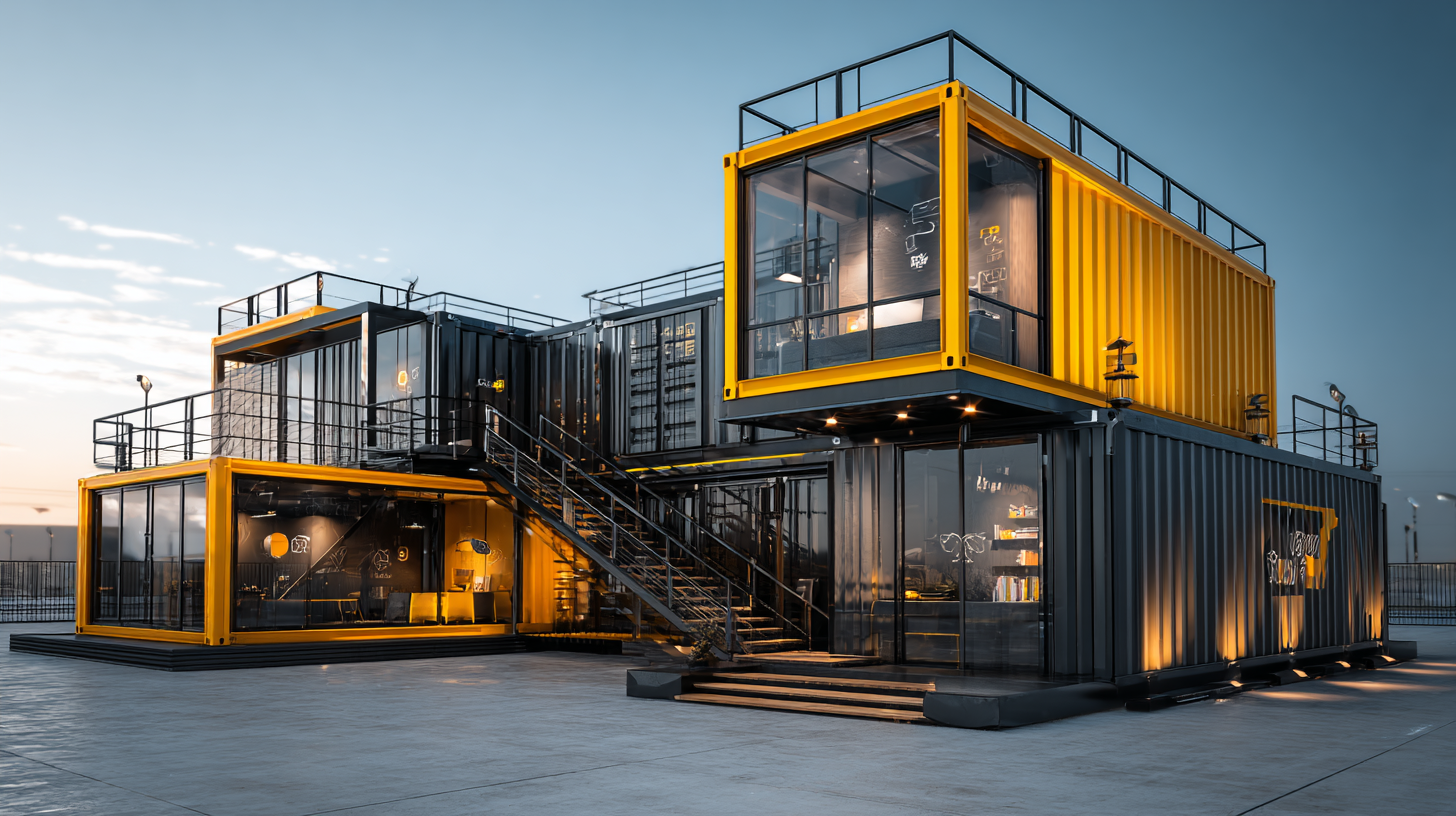
Incorporating recycled materials, shipping container buildings reduce waste and lower the carbon footprint of construction projects. They can be adapted to serve a variety of functions—from affordable housing to creative workspaces—enhancing urban landscapes and contributing to community resilience. As cities grapple with issues such as population growth and climate change, the versatility of these structures presents a compelling case for their broader adoption in sustainable architecture.
The emergence of shipping container buildings has the potential to redefine not just individual structures, but entire neighborhoods and industries. By exploring the top trends and applications in 2025, we can gain insights into how innovative design will shape our future environments, making sustainable living an achievable reality for more people around the globe.
Innovative Design: How Shipping Container Architecture is Reshaping Urban Landscapes
Shipping container architecture is playing a pivotal role in reshaping urban landscapes, bringing a fresh approach to sustainable design. As cities grapple with rapid population growth and a pressing need for eco-friendly solutions, repurposed containers offer a smart and efficient alternative to traditional building methods. These structures are not only affordable and quick to construct but also flexible in use, enabling the creation of vibrant spaces that cater to various community needs. From pop-up shops to multifamily housing units, shipping container buildings exemplify innovative adaptability in urban planning.
Moreover, the modular nature of shipping containers allows for creative architectural expressions that break away from conventional designs. Architects are increasingly exploring ways to stack and configure these units, creating visually striking structures that serve as functional art pieces within cityscapes. This trend not only enhances the visual appeal of urban environments but also encourages a sense of community and connection among residents. By integrating green spaces and energy-efficient technologies, shipping container buildings are setting a new standard for environmentally responsible construction, ensuring that urban growth is sustainable and harmonious with nature.
Sustainability Metrics: Evaluating the Environmental Impact of Container Buildings
The growing trend of innovative shipping container buildings is positioned at the intersection of sustainable architecture and environmental impact assessment. By repurposing steel containers, architects are not only creating functional spaces but also addressing critical sustainability metrics that evaluate energy usage, material waste, and carbon emissions throughout the lifecycle of a structure. These buildings can incorporate energy-efficient technologies and eco-friendly materials, fostering a reduction in the overall environmental footprint associated with traditional construction methods.

Moreover, the intersection of advanced technologies like artificial intelligence plays a crucial role in enhancing sustainability within container buildings. AI's potential to optimize energy efficiency can lead to significant reductions in operational waste and emissions. For instance, utilizing smart systems can help manage energy consumption dynamically, ensuring that these container structures operate at peak efficiency. Additionally, the focus on sustainable waste management practices in construction can be integrated into the container building process, further minimizing environmental impact. This holistic approach not only aligns with the principles of sustainable architecture but also promotes the responsible use of resources in developing urban environments.
Cost Efficiency: Financial Advantages of Using Shipping Containers in Construction
As the demand for sustainable architecture rises, shipping containers are emerging as a cost-effective solution for construction. Utilizing recycled shipping containers significantly reduces material costs and minimizes waste, making them an attractive option for developers looking to enhance their bottom line. The modular nature of these units allows for swift assembly and flexibility in design, which shortens project timelines and increases return on investment (ROI). Developers can expect substantial savings compared to traditional building methods, particularly in terms of labor and resource expenditure.
Moreover, the versatility of shipping containers continues to open new avenues in housing and commercial development. Initiatives such as affordable apartment buildings constructed from repurposed containers address the global housing crisis while adhering to budget constraints. Innovative designs, like flat pack container houses, further demonstrate that shipping containers can be transformed into stylish and functional spaces without breaking the bank. As the industry evolves, these cost-efficient solutions will likely redefine the future landscape of architecture and urban planning, emphasizing sustainability and economic viability.
Community Engagement: The Role of Container Homes in Promoting Affordable Housing Solutions
As urban populations grow and housing costs soar, shipping container homes present an innovative solution to the affordable housing crisis. According to the World Economic Forum, over 1.6 billion people worldwide lack adequate housing, highlighting the urgent need for economical and efficient housing solutions. Container homes, which can be repurposed quickly and at a fraction of the cost of traditional construction, are gaining traction among developers and communities alike. A report by the National Association of Home Builders indicates that the average cost to build a single-family home can exceed $300,000, whereas container homes can be constructed for about $10,000 to $35,000, depending on customization and location.

Community engagement is critical in the adoption of container homes as a sustainable alternative. By involving local stakeholders in the planning and design processes, these projects can create a sense of ownership and promote social cohesion. Data from the Urban Land Institute shows that when communities are involved in housing initiatives, there is a 50% increase in project success rates. Furthermore, container communities often include shared spaces, fostering interaction and support among residents. This collaborative approach not only enhances the living experience but also lays the groundwork for more inclusive urban development models, highlighting the transformative impact of container homes on affordable housing solutions.
Regulatory Trends: Navigating Zoning Laws and Building Codes for Container Projects
The rise of innovative shipping container buildings is reshaping sustainable architecture, yet navigating the complex landscape of zoning laws and building codes remains a critical challenge for developers. According to a recent study by the Container Housing Association, over 60% of container projects face significant delays due to regulatory hurdles. Local governments often classify these structures differently, which can complicate permit applications and delay construction timelines. As cities seek to embrace sustainable practices, understanding the specific zoning regulations related to shipping container use has become essential.
Moreover, a 2023 report from the Urban Design Institute notes that cities with proactive zoning adjustments have seen a 30% increase in container-based developments. These jurisdictions have pioneered flexible regulations that encourage innovative designs while ensuring safety and sustainability standards are upheld. By working closely with urban planners and legal experts, container project developers can better align their initiatives with local building codes. Emphasizing collaboration and compliance can significantly enhance the feasibility of these projects, promoting a more sustainable urban landscape while addressing the housing crisis in many metropolitan areas.
2025 Trends in Shipping Container Buildings
This chart illustrates the impact of various trends on shipping container buildings for sustainable architecture in 2025. As indicated, innovation and sustainability rank highest in importance, setting the direction for future developments.
Related Posts
-

Transform Your Space: The Rise of Shipping Containers for Storage and Their Eco-Friendly Benefits
-
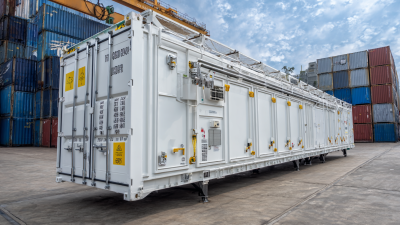
Understanding Container Insulation: The Key to Energy Efficiency in Shipping and Storage
-
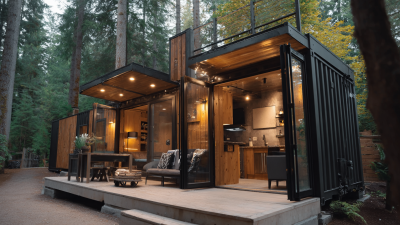
Exploring the Future of Sustainable Living with Container Cabins
-

Unlocking Value: The Sustainable Benefits of Using Second Hand Storage Containers for Your Home
-
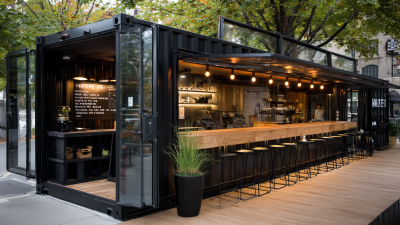
Innovative Shipping Container Restaurant Concepts Transforming Urban Dining Experiences
-
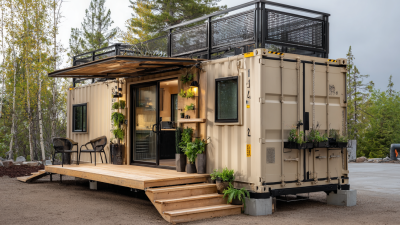
Small Shipping Container Innovations for Sustainable Living and Storage Solutions

